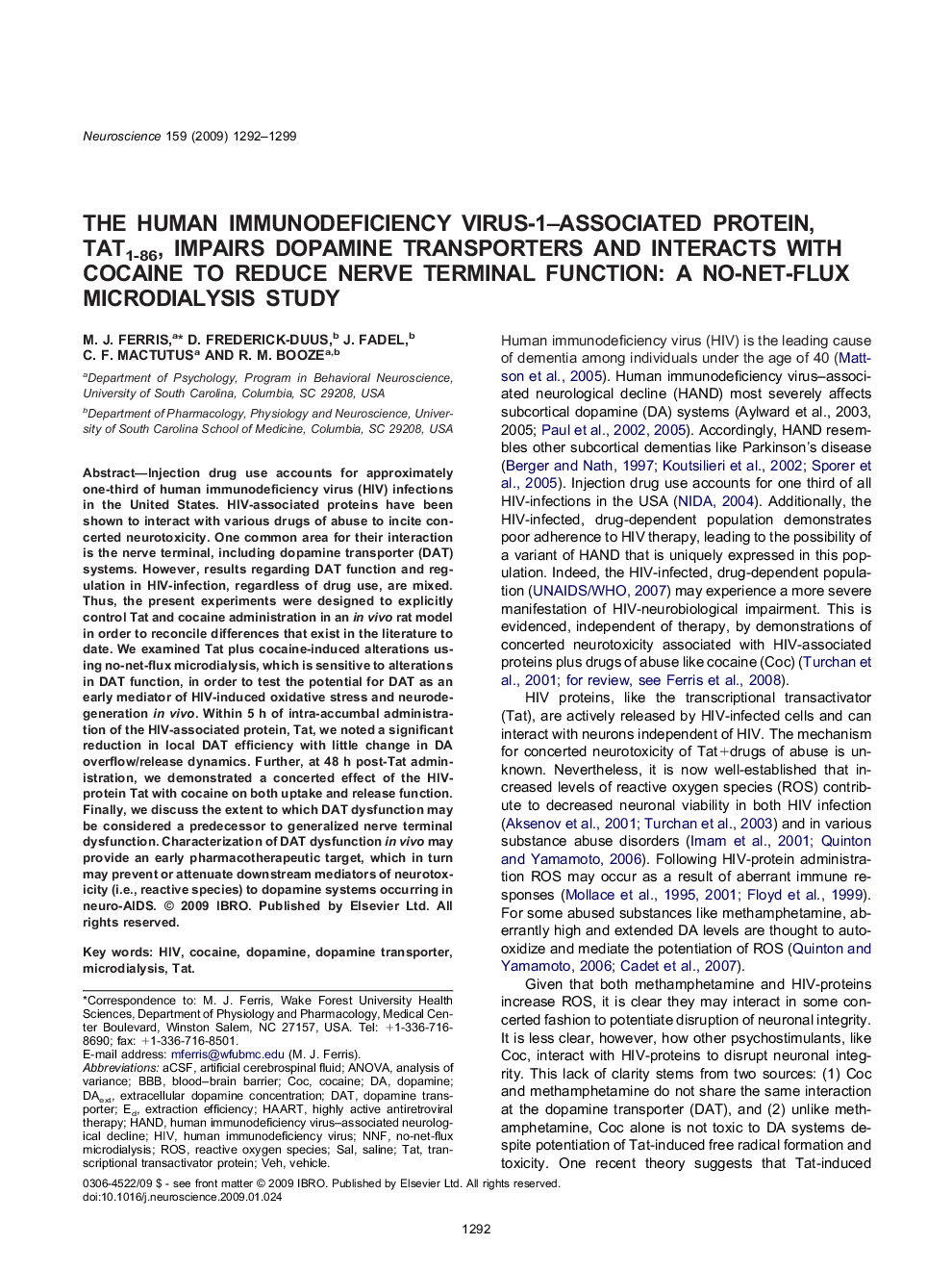| Article ID | Journal | Published Year | Pages | File Type |
|---|---|---|---|---|
| 4339876 | Neuroscience | 2009 | 8 Pages |
Injection drug use accounts for approximately one-third of human immunodeficiency virus (HIV) infections in the United States. HIV-associated proteins have been shown to interact with various drugs of abuse to incite concerted neurotoxicity. One common area for their interaction is the nerve terminal, including dopamine transporter (DAT) systems. However, results regarding DAT function and regulation in HIV-infection, regardless of drug use, are mixed. Thus, the present experiments were designed to explicitly control Tat and cocaine administration in an in vivo rat model in order to reconcile differences that exist in the literature to date. We examined Tat plus cocaine-induced alterations using no-net-flux microdialysis, which is sensitive to alterations in DAT function, in order to test the potential for DAT as an early mediator of HIV-induced oxidative stress and neurodegeneration in vivo. Within 5 h of intra-accumbal administration of the HIV-associated protein, Tat, we noted a significant reduction in local DAT efficiency with little change in DA overflow/release dynamics. Further, at 48 h post-Tat administration, we demonstrated a concerted effect of the HIV-protein Tat with cocaine on both uptake and release function. Finally, we discuss the extent to which DAT dysfunction may be considered a predecessor to generalized nerve terminal dysfunction. Characterization of DAT dysfunction in vivo may provide an early pharmacotherapeutic target, which in turn may prevent or attenuate downstream mediators of neurotoxicity (i.e., reactive species) to dopamine systems occurring in neuro-AIDS.
